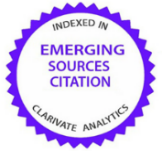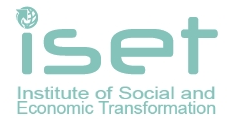Property management dominants for recreational natural resources
Abstract
Introduction. The natural resources national ownership, which basis the formation of state and other forms of ownership, has a complex nature, sometimes its interests do not reflect the interests of every member of society, especially this applies to the system of appropriation in the nature use management. The analysis of various aspects of state property management for natural resources is due to the necessity of its development as a complex, integrated process involving the expansion of horizontal and vertical interactions and relationships.
Aim and tasks. The aim of the article is to determine the vectors for improving the system of state management by appropriating natural recreational resources for their effective disposal, alternatives to use, and, also receiving and distributing the proceeds of its ownership. In accordance with the article aim, were set the following tasks: to investigate the trends of rent payments and environmental taxes revenues to the state budget; to analyze revenues to the state budget from the use of natural recreational resources, for example, forest and water polyfunctional resources; to provide suggestions, how to improve the property state management of natural recreational resources.
Results. Analyze of positive and negative tendencies towards effective state management, based on the experience of managing property ownership on natural recreational resources in different countries of the world, are identified. The essence of appropriation of natural recreational resources as an economic-ecological category is determined, and includes appropriation of income from natural resources and losses for irrational use of them. The budgetary revenues from the use of natural production factors are analyzed and their insignificant part of the product manufacturing cost in the areas of activity (forest and water management) is determined, where the basis of the produced goods and services are natural resources. The horizontal management functions dissipation of the same natural recreational resources between different ministries and agencies is identified. Priorities recommendations on the improvement of state natural recreational resources property management are given (inter alia, regulatory framework, forecasting and planning, organization, accounting and control).
Conclusions. The analysis of rent payments for the natural resources use and environmental taxes shows that almost the free assignment of income from the use of natural capital to economic entities. Thus, summing up the research it can be concluded that the state policy regarding the use of natural recreational capital should be based on ecosystem and polyfunctional approaches, and the most effective directions for its use in various sectors of the national economy and forms of ownership should be determined by the state.
Keywords:
natural resources, state management, appropriation, natural recreational resources, ownership forms, rent payments, ecological taxReferences
2. Khvesyk, M.A., Bystryakov, I.K., Obykhod, H.O. & Khvesyk, J.M. (2018). Assessment of the safety of environment in terms of sustainable development. Economic Annals XXI, 170 (3-4) DOI: 10.21003/ea.
3. Campbell, J.L. (2004). Institutional Change and Globalization. Princeton: Princeton and Oxford University Press.
4. Kelsey, J.B. (2017). Environmental economics in developing countries: An introduction to the special issue. Journal of Environmental Economics and Management, 86, 1–7. DOI: 10.1016/j.jeem.2017.08.007
5. Fоrsund, F.R. (2009). Good modelling of bad outputs: pollution and multiple-output production. International Review of Environmental and Resource Economics, 3(1), 1–38. DOI: 10.1561/101.00000021.
6. Płachciak, A. (2009). Sustainable development as the principle of civic society. Economics & Sociology, 2(2), 85–90.
7. Sej-Kolasa, M. (2009). Taxonomic Methods in Environmental Management. Economics & Sociology, 2(2), 114–122. DOI: 10.14254/2071- 789X.2009/2-2/12.
8. Brokaj, R. (2014). Local government’s role in the sustainable tourism development of a destination. European scientific journal, 10(31), 103–117.
9. Franco, M. & Estevao, C. (2010). The role of tourism public-private partnerships in regional development: a conceptual model proposal. Cadernos Ebape, 8(4), 600–612. DOI: 10.1590/S1679-39512010000400003.
10. Hall, H.R., McCarty, C. & Clark, M.W. (2014). Regulatory protection and definition for recreational uses of Florida lakes, Lake and reservoir management, 30(2), 115–118. DOI: 10.1080/10402381.2014.898349.
11. Lee, T.H., Jan, F.H. & Huang, G.W. (2015). The influence of recreation experiences on environmentally responsible behavior : the case of Liuqiu Island, Taiwan. Journal of sustainable tourism, 23(6), 947–967. DOI: 10.1080/09669582.2015.1024257.
12. Bystriakov, I.K., Pylypiv, V.V. & Lutsiv, O.V. (2013). Capitalization of natural resources: mechanisms of attraction of investments in sustainable development. Ekonomist. 10, 38–41. [in Ukrainian].
13. Zerkalov, D. V. (2007). Environmental safety: management, monitoring, control. Kiev: KNT, Dakor, Osnova. [in Ukrainian]
14. Cherchyk, L.M. (2016). Management of environmental quality. Ekonomihni innovatcii. 61, 377–383 [in Ukrainian].
15. Holian, V. A. (2017). Rent for natural resources: how much money was received by the state budget. Mind. Retrieved from: https://mind.ua/openmind/20172923-renta-za-prirodni-resursi-skilki-groshej-otrimav-derzhbyudzhet [in Ukrainian].
16. Danylyshyn, B. M. & Mishchenko, V. S. (2006). Rent and Development of Rental Relations in Ukraine. Science and Innovation, 5(2), 81–92. [in Ukrainian].
17. Sowder, A. (2017). The History and Growth of Central Park. ThoughtCo. Retrieved from: https://www.thoughtco.com/central-park-overview-1435534
18. Detter, D., Folster, F. (2017). State wealth of peoples. How government management can send or undermine economic growth. (I. Piontkivska, trans.). Lviv: Old Lion Publishing [in Ukrainian]
19. Tourism in Israel 1990-2011. (2012). Сentral Bureau of Statistics Israel. Retrieved from: http://cbs.gov.il/reader/?MIval=cw_usr_view_SHTML&ID=336.
20. Economic of Israel (2017). Сentral Bureau of Statistics Israel. Retrieved from http://cbs.gov.il.
21. State Treasury Service of Ukraine. (2016). Report on implementation of the State Budget of Ukraine for 2015. Retrieved from: https://www.treasury.gov.ua/ua/file-storage/richniy-zvit-pro-vikonannya-derzhavnogo-byudzhetu-ukraini-za-2015-rik. [in Ukrainian]
22. State Treasury Service of Ukraine. (2017). Report on implementation of the State Budget of Ukraine for 2016. Retrieved from: https://www.treasury.gov.ua/ua/file-storage/richniy-zvit-pro-vikonannya-derzhavnogo-byudzhetu-ukraini-za-2016-rik [in Ukrainian]
23. State Treasury Service of Ukraine. (2018). Report on implementation of the State Budget of Ukraine for 2017. Retrieved from: https://www.treasury.gov.ua/ua/file-storage/richniy-zvit-pro-vikonannya-derzhavnogo-byudzhetu-ukraini-za-2017-rik [in Ukrainian]
24. Osaulenkо O.G. (Eds.). (2011). Statistical Collection. Ky`yiv: Derzhavna sluzhba staty`sty`ky` Ukrayiny`, TOV «Avgust Trejd» [in Ukrainian]
25. Statistical Collection. (2018). Ky`yiv: Derzhavna sluzhba staty`sty`ky` Ukrayiny` TOV «Vy`davny`cztvo «Konsul`tant» [in Ukrainian].
26. Kozlovskyi, S.O., Henyk O.V.(2004). Sources of financing of nature reserves of the western region of Ukraine. Naukovyi visnyk LNTY, 14(8), 109-118 [in Ukrainian]
27. The Law of Ukraine On the protection of the environment №1264-XII-VR. (1991, Juny 25). Vidomosti Verkhovnoyi Rady Ukrainy, 41, 546. Retrieved from: http://zakon.rada.gov.ua/cgi-bin/laws/main.cgi?nreg=1264-12 [in Ukrainian]
28. The Civil Code of Ukraine № 345-IV-VR (2003, January 16). Vidomosti Verkhovnoyi Rady Ukrainy, 33, 440 [in Ukrainian].
29. Law of Ukraine Land Code of Ukraine № 2768-III-VR. (2001, October 25). Vidomosti Verkhovnoyi Rady Ukrainy, 38-39, 380 Retrieved from: https://zakon.rada.gov.ua/laws/show/2768-14 [in Ukrainian]
30. The Law of Ukraine On a moratorium on the change of the intended use of separate land plots for recreational purposes in cities and other settlements № 3159-VI-VR (2011, March 17). Vidomosti Verkhovnoyi Rady Ukrainy, 40, 400 Retrieved from: http://zakon.rada.gov.ua/laws/show/3159-17 [in Ukrainian]
31. Law of Ukraine Water Code of Ukraine № 213/95-VR (1995, June 06), Vidomosti Verkhovnoyi Rady Ukrainy, 24, 189 [in Ukrainian]
32. Law of Ukraine Forest Code of Ukraine № 3852-XII (1994, January 21), Vidomosti Verkhovnoyi Rady Ukrainy, 17, 99 [in Ukrainian]
33. Code of Ukraine On Subsoil № 3852-XII-VR (1994, Jule 27), Vidomosti Verkhovnoyi Rady Ukrainy, 36, 341. [in Ukrainian]
34. Shevchenko, G.M. (2017). Forecasting the development of recreation in Ukraine. Socio-economic equilibrium. Sumy: University book. [in Ukrainian]

This work is licensed under a Creative Commons Attribution-NonCommercial 4.0 International License.
If the article is accepted for publication in the journal «Economics. Ecology. Socium» the author must sign an agreementon transfer of copyright. The agreement is sent to the postal (original) or e-mail address (scanned copy) of the journal editions.





















